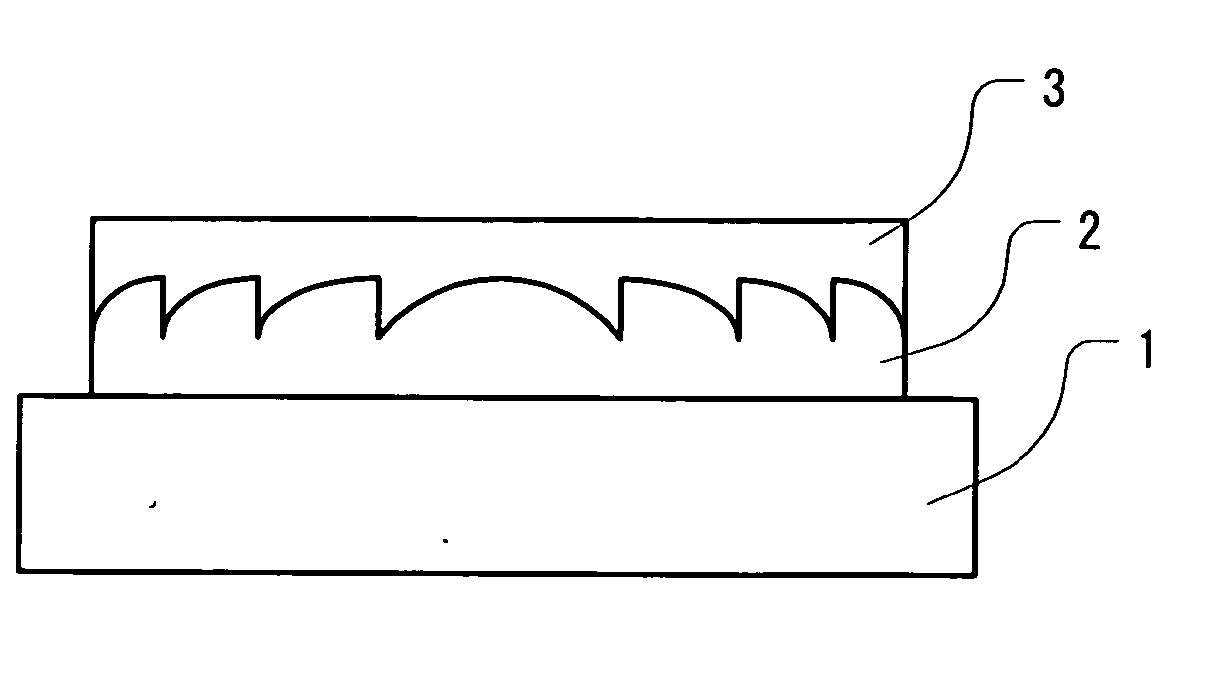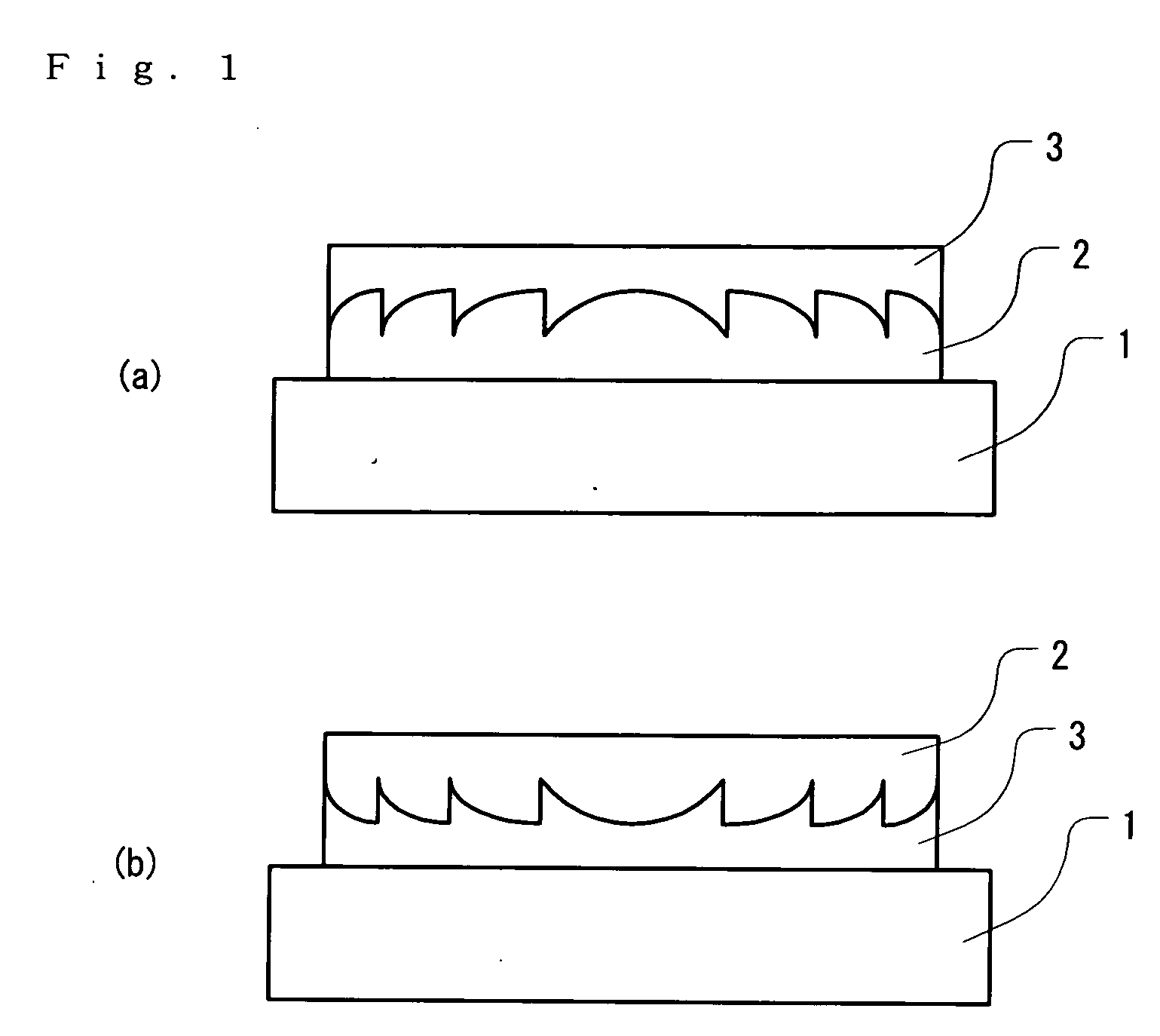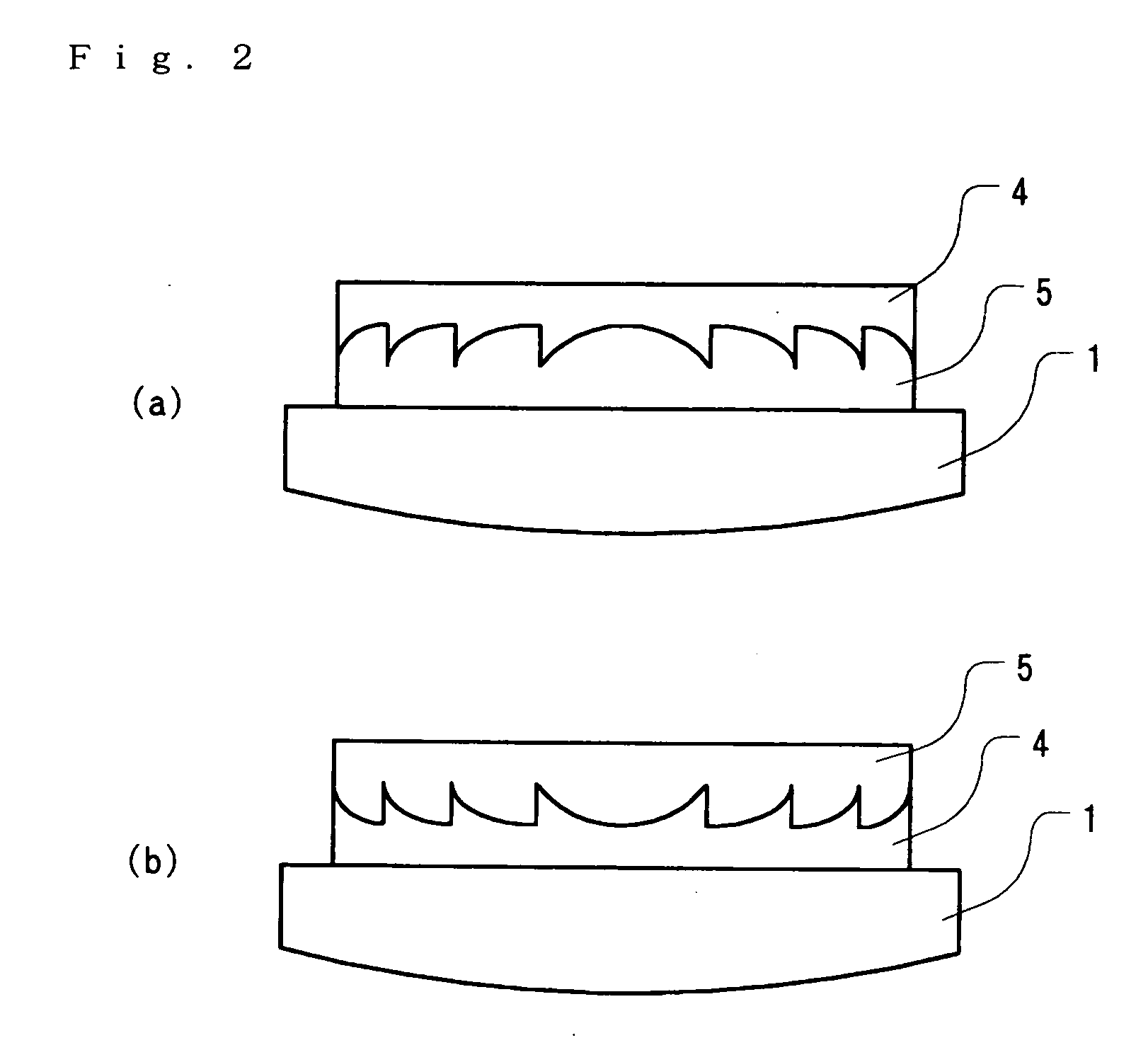Optical element
a technology of optical elements and antireflection films, applied in the field of optical elements, can solve the problems of poor adhesion of antireflection films, scratched outside air, and difficult glass work process, and achieve the effect of good environmental durability
- Summary
- Abstract
- Description
- Claims
- Application Information
AI Technical Summary
Benefits of technology
Problems solved by technology
Method used
Image
Examples
embodiment 1
[0065] Optical elements having the shapes shown in FIG. 1 (diffractive lenses having the function of a convex lens) were formed. The external diameter of the optical elements (resin portion) was 60 mm, the diffraction grating was a circular shape, the pitch in the vicinity of the center of the lens was 2 mm, with this pitch becoming narrower toward the outer circumference as shown in FIG. 1, so that the pitch in the vicinity of the outer circumference was 0.12 mm.
[0066] A resin whose main component is urethane acrylate was used as the resin 2, and a resin containing fluorinated acrylate was used as the resin 3. The refractive index of the resin 2 is greater than the refractive index of the resin 3. The characteristics of the cured materials of the resin 2 and resin 3 are as shown in Table 1. In Table 1, variations in transmissivity before and after light resistance test by means of a carbon fade meter (abbreviated and described as “variations in transmissivity before and after carb...
embodiment 2
[0069] Diffractive lenses having a positive power were manufactured. The shape of the diffraction grating was a shape shown in FIG. 2(b), the external diameter of the optical elements was 60 mm, the height of the grating was 20 μm, and the grating pitch was 2 mm in the vicinity of the center and 0.12 mm in the vicinity of the outer circumference, so that the pitch was designed to be narrower toward the outer circumferential surface.
[0070] A resin whose main component is urethane acrylate was used as the high-refractive index resin 5, and a resin containing fluorinated acrylate was used as the low-refractive index resin 4.
[0071] In the first diffractive lens, no drafts were formed in the relief pattern, so that this lens had a vertical step structure. In the second diffractive lens, drafts were formed in the relief pattern as shown in FIG. 3, and these drafts were formed so that the inclination increased toward the edge portions of the diffractive lens, and the gradient at the oute...
PUM
 Login to View More
Login to View More Abstract
Description
Claims
Application Information
 Login to View More
Login to View More - R&D
- Intellectual Property
- Life Sciences
- Materials
- Tech Scout
- Unparalleled Data Quality
- Higher Quality Content
- 60% Fewer Hallucinations
Browse by: Latest US Patents, China's latest patents, Technical Efficacy Thesaurus, Application Domain, Technology Topic, Popular Technical Reports.
© 2025 PatSnap. All rights reserved.Legal|Privacy policy|Modern Slavery Act Transparency Statement|Sitemap|About US| Contact US: help@patsnap.com



